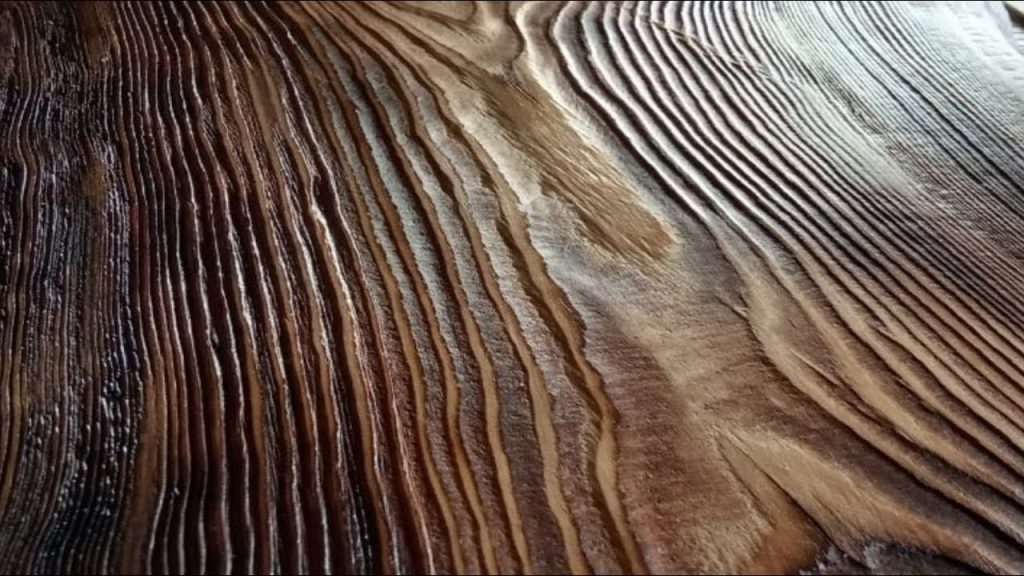When creating residential and commercial projects, designers are constantly on the lookout for new solutions. To feed their creative ideas, we work through different technologies for treating wood. Today we’re going to talk about treating wood with lye.
Alkali is a chemical compound that dissolves well in water, and when it interacts with wood, it reacts with its tannins and oxidizes them. In this way, the wood changes its natural hue. As soon as we apply the lye to the wood, it kind of ignites the oak, giving it a bright maroon hue, and after some time the oak becomes yellowish in color.
The photo below just shows the reaction of the lye: the oak on the right with the lye just applied and the oak on the left after some time. In the second photo, the small piece of wood is Karagach. It too has changed its hue, but not as much as the oak. It’s all about the very tannins, which are much more abundant in oak than in elm.

After drying, the wood can be treated with our Saicos oils. For walls we use Colorwachs colored waxes in various shades. It can be applied in 1 or 2 coats depending on the decorative effect you want to get as a result. Colorwachs is used for vertical surfaces – walls, facades, furniture, decorative items to create and decorate the interior, etc.
For floors we use oil with hard wax Premium Hartwachsol, which is applied in 2 layers. The only thing to keep in mind when using lye on large areas is that lye ignites tannins, and on different oak boards the amount of tannins in the wood is different. You may get the effect that somewhere the oak will be lighter, somewhere darker, and somewhere it will be lighter at all. This is a natural reaction of the wood, but you have to be prepared for this and understand that the floor under the lye will not be an even shade.
And in the following photo we can observe our experiment. These are oak cubes, which were soaked in lye for a long time – about a week. This experiment confirms to us that the lye is really a very corrosive component, which soaks through the wood in the presence of time for this and a sufficient amount of material, that is, the lye itself.
